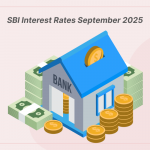The Reserve Bank of India (RBI) will hold discussions with bond market participants on September 3–4, 2025, to review the government’s ₹6.8 trillion second-half borrowing plan (October–March). The meeting is expected to address rising bond yields, demand concerns, and fiscal uncertainty triggered by GST-related revenue pressures.
Why This Meeting Matters
- Investor Anxiety: Yields on ultra-long bonds (30–50 years) have surged ~30 bps in August compared to ~19 bps on 10-year benchmarks.
- Market Confidence: Traders are urging RBI to intervene with Open Market Operations (OMOs) or Operation Twist to stabilize yields.
Fiscal Impact: The government’s borrowing strategy directly influences liquidity, lending rates, and India’s broader economic outlook.
What’s Driving Bond Yield Spikes?
- 1. Ultra-Long Bond Oversupply
- Large issuances of 30–50 year bonds have outpaced investor demand, leading to price declines and higher yields.
- 2. Fiscal Pressure from GST Cuts
- Recent GST rate cuts and simplifications may reduce revenues, prompting fears of higher borrowing needs and worsening fiscal deficit.
- 3. Transmission Blockages
Despite rate cuts by RBI earlier this year, high yields have prevented banks from lowering loan rates significantly—limiting monetary policy effectiveness.
RBI’s Possible Playbook
Open Market Operations (OMOs)
Targeted bond purchases can inject liquidity, helping cap long-term yields.
Operation Twist
By buying long-term bonds and selling short-term ones, RBI can flatten the yield curve and reduce borrowing costs.
Adjusting Bond Supply
Shifting issuance away from ultra-long maturities toward medium-term bonds could align supply with demand.
Global & Domestic Context
- Sovereign Upgrade: India’s recent credit upgrade may attract more foreign inflows into bonds.
- Global Rate Cuts: Anticipated easing by major central banks could improve investor appetite for Indian debt.
- Fiscal Caution: Government spending commitments and GST adjustments remain crucial variables for bond market stability.
Investor Strategies Amid Volatility
- Short to Medium-Term Bonds: Balance portfolios with 2–7 year bonds to reduce exposure to yield spikes.
- High-Quality Instruments: Focus on AAA-rated corporate bonds and sovereign securities.
- Barbell Strategy: Combine short-term holdings for liquidity with selective long-duration exposures for yield pick-up.
FAQs — Quick Insights
1. Why is the RBI meeting bond market players?
To gather feedback and align second-half borrowing strategies with market demand while addressing rising yields.
2. Why are ultra-long bonds under pressure?
Excessive issuance coupled with weak demand has driven yields up sharply, reducing investor appetite.
3. How do GST cuts affect bonds?
Lower revenues from GST may widen the fiscal deficit, forcing higher government borrowing and pushing yields up.
4. What tools can RBI use?
OMOs, Operation Twist, and adjusting the supply mix of bonds are likely interventions.
5. Is now a good time to invest in bonds?
Yes—if investors focus on short-to-medium maturities and high-quality papers to manage risk.
6. Will global trends help India’s bond market?
Yes. Global rate cuts and India’s sovereign upgrade may bring fresh inflows, stabilizing yields.
Conclusion
The RBI’s consultations this week mark a turning point for India’s bond market. With fiscal concerns intensifying and investor confidence shaken, the central bank’s approach—whether through interventions or supply adjustments—will shape borrowing costs for the rest of FY25. For investors, maintaining a diversified, cautious bond portfolio is the best hedge until clear signals emerge.













